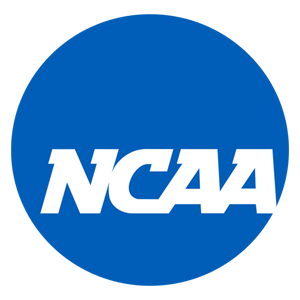
HOMESCHOOLING IN ALASKA & HOMESCHOOL LAWS
You may be considering home schooling your child in Alaska, but don’t know where to start regarding state law and requirements. This guide will walk you through what you need to know to successfully set up your own homeschool program legally in Alaska. We’ll cover the history of homeschooling in Alaska, current law and regulations, required notifications and filings, curriculum and testing choices, high school transcripts, access to extracurricular activities, graduation requirements, and special education services.
This page is not intended to provide legal advice or otherwise constitute legal guidance. Always check your state regulations for the most current laws.
History of Homeschooling in Alaska
Alaska’s vast expanses include numerous remote regions where traditional schooling infrastructure struggles to reach due to sparse populations, especially evident in the historical context of 1939 when Alaska’s first correspondence program was initiated to address this educational gap.
By the 1970s and 1980s, the burgeoning homeschool movement intersected with Alaska’s educational landscape. Parents seeking alternative educational approaches faced a choice between establishing a private school or enrolling their children in correspondence programs provided by Alaska.
In 1997, the town of Galena, Alaska, witnessed the founding of Interior Distance Ed. of Alaska (IDEA), a correspondence program tailored specifically to meet the needs of homeschoolers. This initiative marked a proactive response by the local district to accommodate the rising demand for alternative educational pathways in Alaska.
IDEA’s model inspired similar correspondence programs to emerge statewide, each affiliated with local districts and offering a range of resources. While some parents expressed concerns about perceived encroachments on their autonomy, a majority opted to enroll their Alaska homeschool students in these correspondence programs, recognizing the practical advantages they offered in navigating Alaska’s educational landscape.
Current Alaska Homeschool Laws and Regulations
If you decide to homeschool, Alaska has multiple avenues for homeschool programs while adhering to the state’s compulsory enrollment law. The law requires that a child between the ages of 7 and 16 either attend school or comply with Alaska homeschool law. Alaska homeschool laws provide alternative options to traditional schooling, including attending an Alaska homeschool program that meets legal requirements akin to a “religious or other private” institution, receiving tutoring from a certified teacher, enrolling in a full-time correspondence program approved by the Department of Ed., or participating in a board-approved learning program requested by the child’s parents for exemption from attendance.
According to Alaska homeschool laws, parents intending to homeschool are not obligated to register with their local district, nor are they required to seek consent, undergo testing, file forms, or possess any teacher qualifications. However, if parents opt for home schooling through private tutoring, the individual must hold a valid teacher certification in accordance with the law.
Alternatively, under Alaska homeschool laws, if parents choose to establish their home as a private or religious option, various forms and reports are required, including affidavits of compliance, corporal punishment policies, enrollment records, academic calendars, enrollment reports for the local district, documentation of immunization, standardized testing results, and academic achievement reports.
Homeschool laws in Alaska are very detailed but once you understand the requirements, you can easily begin your journey.
How to Set Up a Homeschool In Alaska
Alaska homeschool laws provide four distinct pathways to homeschool. Once a family selects one of these options, it’s essential to comply with the law associated with their chosen method.
Option 1: Home schooling under the homeschool statute
Under the homeschool statute option, parents have the freedom to educate their child within the confines of their home in accordance with the law. This choice affords autonomy without the need to inform the state, undergo testing, submit paperwork, or possess specific teacher qualifications. The homeschool statute option provides a flexible and personalized approach, allowing parents to tailor the lessons to suit their child’s individual needs and learning styles, while maintaining full responsibility for their child’s academic progress and development in accordance with the law.
Option 2: Home schooling with a private tutor
The student can be instructed at home by a tutor who is an Alaska-certified teacher in accordance with the law.
Option 3: Home schooling with school board consent
Under this provision, your child can be excused from attending public schooling as long as your learner is equally well served by an educational experience approved by the school board, parents can submit a written request for excuse and this needs to be approved by an administrator or principal where your learner attends in accordance with the law.
Option 4: Home schooling as a religious private school
Submit an annual enrollment reporting form to the local superintendent by day one of public school. Utilize the Enrollment Reporting Form for School Districts provided by the Department of Ed., available on its website in accordance with the law.
File the Exempt Enrollment and Calendar forms with the Department of Ed. before October 15 each year in accordance with the law.
Ensure accurate maintenance of a monthly record of attendance, demonstrating a minimum of 180 days of school attendance annually.
Maintain comprehensive and up-to-date permanent records, including immunization records, course details, standardized testing results, academic achievements, and physical examination records in accordance with the law. Certify the maintenance of these records to the Alaska Department of Ed. using the Affidavit of Compliance available on the department’s website.
If the school accommodates students from multiple homes, file a corporal discipline policy with the Alaska Department of Ed. in accordance with the law. Utilize the Corporal Punishment Policy form accessible on the department’s website.
Private or religious schools must abstain from accepting any form of direct state or federal funding, adhering to their independent funding status.
Ensure compliance with standardized testing requirements for 4th, 6th, and 8th grades. Parents may select any nationally standardized achievement test measuring proficiency in English grammar, reading, spelling, and mathematics in accordance with the law. Test results must be available to the Department of Ed. upon request.
Once you understand the homeschool laws, Alaska is a great state to homeschool. Whichever option you choose to homeschool, AK has clear guidelines to assist you in your journey.
Maintaining Your Alaska Homeschool
Maintaining a homeschool involves several key steps and ongoing efforts to ensure compliance with Alaska homeschool laws while providing a quality learning experience for your child. Here’s a comprehensive guide:
Decide on the homeschooling option that best suits your family’s needs, whether it’s educating your child at home as a parent or legal guardian, participating in a correspondence study program, enrolling in a private or religious school, or seeking approval from the board for an alternative learning experience in accordance with the law.
Depending on the option you choose, fulfill any initial requirements such as filing enrollment forms, submitting exemption requests, or obtaining written excuses from school attendance.
Keep detailed records of your homeschooling activities, including attendance, lesson plans, samples of your child’s work, standardized test results, and any correspondence with authorities.
Ensure that your homeschooling lessons meet Alaska’s educational standards and requirements. You have flexibility in designing your lessons, but it should cover core subjects such as math, science, language arts, social studies, and health in accordance with the law.
Regularly assess your child’s academic progress and adjust your teaching methods as needed to address any areas of difficulty or interest.
Stay informed about changes to the homeschooling law in Alaska. Keep in touch with relevant authorities, such as the Department of Ed. and local districts, to stay updated on any new Alaska homeschool laws.
Alaska Homeschool Reporting Requirements
In Alaska, a homeschooling family has certain reporting requirements to fulfill in order to comply with state law. These requirements may vary depending on the chosen method of homeschooling. Here is an overview of the reporting requirements:
A homeschooling household must file an annual enrollment reporting form with the local superintendent by the first day of public school in accordance with the law. This form is typically due at the beginning of the academic year and serves to notify the authorities of the intention to homeschool.
Additionally, a homeschooling family must file the Exempt Religious & Other Private Schools Enrollment and School Calendar forms with the Department of Ed. before October 15 each year in accordance with the law. These forms provide information about the homeschooling program and its calendar schedule.
Homeschooling households are required to maintain monthly attendance records showing a minimum of 180 days of attendance each year. These records serve as documentation of compliance with the state’s attendance requirements and may need to be submitted upon request.
Households must maintain permanent records of various aspects of their homeschooling program, including immunization records, course details, standardized testing results, academic achievements, and physical examination records. These records must be certified to the Alaska Department of Ed. using the Affidavit of Compliance provided by the department on its website.
If the homeschooling program involves children from multiple households, a corporal discipline policy must be filed with the Alaska Department of Ed. The Corporal Punishment Policy form provided by the department on its website must be used for this purpose.
It’s essential for households to familiarize themselves with these reporting requirements and ensure timely compliance with the law to maintain their homeschooling status in Alaska.
Homeschool Testing In Alaska
In Alaska, homeschooling typically doesn’t entail formal testing requirements unless the homeschool operates as a private or religious institution. In such instances, parents are responsible for administering nationally standardized tests covering subjects like grammar, reading, spelling, and mathematics. These assessments are mandated for grades four, six, and eight, aiming to ensure academic proficiency and accountability within the homeschooling framework.
For further guidance on fulfilling testing obligations and establishing a private or religious school, homeschooling households can refer to the State of Alaska Department of Ed. and Early Development’s comprehensive guide. This resource provides detailed instructions when navigating the testing process and meeting requirements of the law.
Funding Your Alaska Homeschool
In Alaska, homeschooling is primarily funded through a combination of state as well as contributions from homeschooling households themselves. Here’s a breakdown of the funding sources:
State Funding: Alaska provides funding for homeschooling programs through its Department of Ed. This funding may include resources for correspondence programs, learning materials, standardized testing, and other educational services offered to homeschooling households.
Local Funding: Some districts in Alaska may allocate local funds for homeschooling initiatives within their jurisdiction. This could include funding for homeschooling resources, or enrichment activities.
Alaska Homeschool Allotment: Homeschooling households in Alaska may receive student funding allotments from the state or local district. These allotments are typically provided on a per-student basis and can be used to cover educational expenses such as curriculum, classes, and educational resources.
Private Funds: Homeschooling households in Alaska may also rely on private funds for their educational endeavors. This could include personal savings, donations, or funds raised through homeschooling associations.
Homeschooling in Alaska is funded through a combination of state, local, and private resources, with funding allocations varying depending on the specific programs and services available for homeschooling within the state.
Federal Tax Breaks
Homeschooling households may be eligible for certain federal tax benefits to help offset educational expenses. One option is a Coverdell Savings Account, which allows money to grow tax-free when used for qualified education costs. Homeschool parents might also be able to deduct a portion of mortgage interest or rent if part of the home is used regularly and exclusively for homeschooling. Finally, tax deductions could be available for required books, supplies, equipment and curricula used for homeschool instruction. To learn more about these potential tax advantages, homeschooling families should review the information and resources provided by the IRS.
Alaska Immunization Requirements
In Alaska, vaccination requirements differ depending on the type of schooling a child receives. While those attending public or private schools are mandated to be vaccinated, there’s a distinction for homeschooled students. Despite being exempt from the classification of private school students, homeschooled students, particularly those enrolled in Alaska’s correspondence programs, are still obligated to meet immunization requirements. This ensures that all children, regardless of their educational setting, contribute to safeguarding public health through vaccination protocols.
Alaska State Graduation Requirements
While Alaska does not impose formal requirements for homeschoolers to graduate, parents may still wonder about the criteria applicable to traditional high schoolers. In Alaska’s public school system, students are expected to complete a minimum of 22.5 credits to earn their high school diploma. These credits are allocated as follows:
English: 4 credits
Health: 0.5 credit
Mathematics: 3 credits
Physical Education: 1.5 credits
Science: 3 credits
Social Studies: 3.5 credits
Electives: 7 credits
Additionally, local school boards determine additional credit requirements, typically nine or more, tailored to the specific needs of their district. Furthermore, public school students must demonstrate proficiency by achieving passing scores on all three sections of the Alaska High School Graduation Qualifying Exam. These criteria collectively ensure that learners are equipped with the necessary knowledge and skills for successful graduation from the public school system.
Alaska Homeschool Charters
There are no state-recognized or state-funded homeschool charter schools or virtual academies available to Alaska homeschoolers. All legal homeschooling is conducted through fully independent parent-led home education.
Alaska has a number of charter schools that function as public educational institutions under the supervision of their respective local school districts. For example, the Anchorage School District currently oversees the operations of nine charter schools catering to around 3,000 students within its jurisdiction.
Local Alaska Homeschooling Resources
While Alaska does not fund or provide state-level resources directly for homeschool, some local school districts do allow homeschoolers to access limited public school resources beyond the minimum legal requirements. Policies vary by district, but options can include:
Enrolling in individual courses at the local public school on a part-time basis.
Accessing district facilities like libraries, computer labs, gyms, etc.
Participating in district-sponsored extracurricular activities.
Receiving special education services in certain cases.
Alaska districts establish state-funded public correspondence schools to cater to those opting for homeschooling and independent high school students. These correspondence programs are designed to offer flexibility and support statewide, providing various enrollment options and customizable curriculum choices tailored to each child’s educational requirements.
Most districts will require the parent to have a homeschool on file with the district before allowing access to these types of additional resources. Each district sets their own processes and eligibility policies. Homeschool families should inquire with their local district administration about services available in their specific community.
Additionally, many areas have independent homeschool cooperatives, support groups, and umbrella schools that provide community-led resources and enrichment activities. Some examples include:
Kenai Peninsula Independent Homeschoolers: This group is exclusively for independent homeschooling Alaskan families, on the Kenai Peninsula, and independent homeschooling “alumni.” Families in this group homeschool independently.
IDEA Homeschool: An accredited public school in Alaska, provides public funds (allotments) to Alaska homeschooling families in support of their goals, curriculum choices, textbooks, equipment purchases, and services. Certified teachers support families throughout the process, providing as much or as little support as desired, within a very reasonable public education framework.
Homeschooling families should research any local support networks to connect with area activities, resources and a sense of community around home education. While Alaska may have minimal official supports and funding, creative homeschoolers have developed grassroots solutions in many regions.
91,402 Enrolled Students

Subscriber

About the Author
Heather holds a JD from New England Law | Boston and is a licensed attorney in Massachusetts. Heather is a seasoned professional with over 20 years of experience in education and the law. Currently, she is Legal Counsel and Program Manager for Homeschooling at SVHS. Previously, she served as the Director of Academic Programming and as a corporate attorney at a higher education startup. Heather’s expertise spans online learning, curriculum development, accreditation, and strategic compliance, ensuring alignment with ever-evolving legal regulations.
































